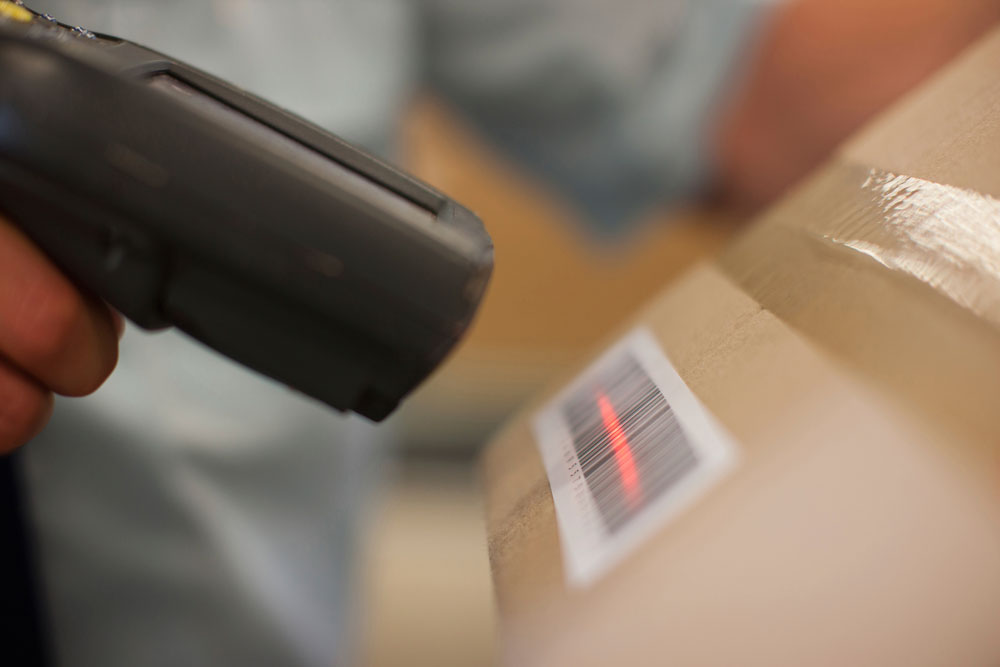Wasp Barcode Technologies: The Barcode Solution People
What is a Barcode Scaner?
Affordable Barcode Scanners: What They Are, How They Work
Choosing the right barcode scanner is an essential part of an effective
inventory management system. Many scanners on the market today interface to a host PC via standard connections (USB, serial, or parallel ports) and decode and transmit data directly via inventory software programs compatible with most popular commercial accounting applications, including QuickBooks® and Microsoft Excel®.
Barcode scanners come in several distinct types, or
form factors:
 Pen or wand scanners
Pen or wand scanners typically augment a desktop PC for light scanning tasks in an office environment, such as scanning barcodes on ID cards or printed documents, or tracking items in light mailroom duties. Pen scanners are manually swiped across the surface of a linear/1D barcode.
Handheld scanners feature an ergonomic pistol grip and trigger-activated operation for one-touch scanning of barcodes from distances of 12 inches or longer.
Handheld scanners are ideal for high-volume barcode scanning in a wide range of environments, from retail point-of-sale (POS), to healthcare, to heavy industrial applications such as manufacturing, warehouses, and shipping. Depending on the user's needs, handheld scanners can include these additional features:
Choosing the right barcode scanner is an essential part of an effective inventory management system.
|
- Presentation scanners are small base-mounted units designed for stationary, hands-free operation. They are a highly efficient choice for counter top scanning of barcodes in POS, office, or warehouse settings. Presentation scanners read barcodes automatically, without a manual trigger.
- Mobile computers offer the ultimate flexibility in barcode scanning, combining a scanner with a PC-based processor for unlimited barcode readings within a single building or general area. Typically fitted with a numeric or full QWERTY keyboard for additional manual input when needed, a mobile computer scanner can link directly into a wide area network (WAN) or store hours of scan data within its own internal batch memory for a later download. Mobile computers have proved to be the most efficient solution for advanced inventory management and asset tracking needs.
 HOW BARCODE SCANNING WORKS
HOW BARCODE SCANNING WORKS
All barcode scanners emit red light to illuminate a
printed black-on-white barcode, then read the reflection from the unique sequence of thin and thick bars. That pattern is deciphered and ultimately converted into digital code, which is fed into the user's host computer.
The
scanning engine of a barcode scanner is determined by one of four illumination methods:
Pen scanners use a
single point LED light to read a barcode. While durable and relatively inexpensive, single LEDs require the user to manually swipe the pen across the barcode, in direct contact with its surface. This tends to create the highest volume of misreads resulting from human error.
A charge coupled device (
CCD), also known as a linear LED scanning engine, consists of as many as several hundred tiny LED diodes in a single row. This array of LEDs combines to measure a barcode by ambient light, which in turn delivers consistently accurate readings.
A
laser scanner, either handheld or stationary, uses internal mirrors to reflect a wide-angle pattern of light which captures an entire barcode in a single reading. The main advantage of a laser scanner is flexible working distance, barcodes can be accurately scanned from as far as several feet away.
A
2D imager reads both traditional linear (1D) barcodes and advanced two-dimensional (length plus height) targets, such as QR codes. Similar to the configuration of a CCD scanner, the 2D imager stacks
multiple rows of LEDs to create the "matrix" necessary to fully and accurately read a coded 2D target.
WHICH SCANNER IS BEST FOR YOU?
The convenience of barcoding is more affordable than ever for businesses of all sizes. Before investing in a full barcode hardware system, decide what factors are most important for your company's inventory management system:
- How often will the scanner be used?
- Where will the scanner be used? Should it be ruggedized for extra-tough conditions?
- Should the scanner be corded to your computer, or cordless for the freedom to roam?
- Do you need a traditional 1D barcode scanner, or a "future-proof" 2D device?
Has does your business track inventory currently?




